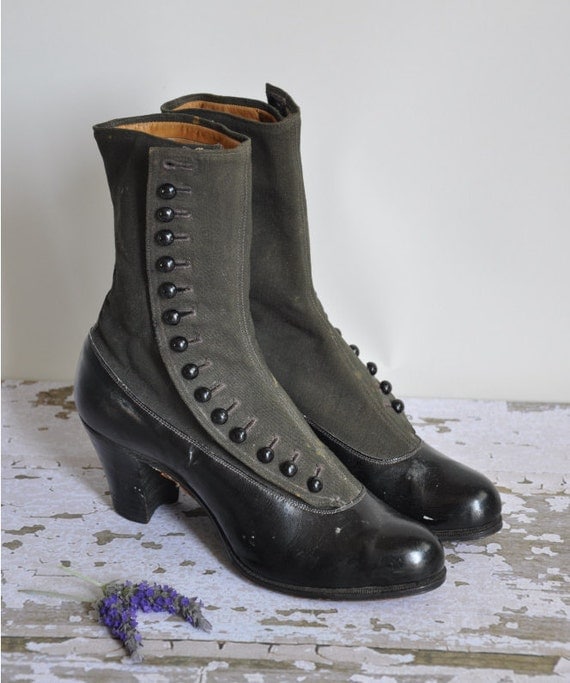Button boots are so cool. They were the height of style from the 1850s all the way to about 1918.
The earliest button boots date all the way back to about 1808, when it was popular and practical to wear buttoned gaiters over the tops of shoes. By 1817, shoe+gaiters, all in one, were being made, and went on to be a common fashion for both men and women's footwear, through the 1820s and 30s.
By the 1850s, button-up boots were being made with small stacked heels, as well as the continuing flat soles. Square toes were all the rage, continuing through the 1870s, when the heels and tops grew in height.
The scalloped fly was popular in the 1860s and 70s, but continued to be seen through the 1880s and 90s, alongside the straight fly. By the 1880s, toes grew more pointed, but it wasn't until the 1890s that the extremely sharp and long pointed toe became fashionable.
High button boots continued, with variations in toes and heels, until the end of the Great War, by which time they were either replaced by lace-up boots, or shed completely in favor of high heeled pumps.
*Note:
Tavistock Victorian Button Boots fall in the date ranges of about 1880 through 1918 - they exhibit a moderately pointed toe, straight fly, tall shank, and French heel typical of this period.



